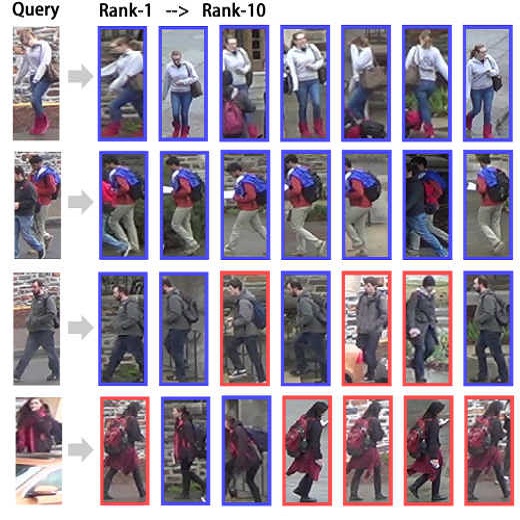Employing part-level features for pedestrian image description offers fine-grained information and has been verified as beneficial for person retrieval in very recent literature. A prerequisite of part discovery is that each part should be well located. Instead of using external cues, e.g., pose estimation, to directly locate parts, this paper lays emphasis on the content consistency within each part. Specifically, we target at learning discriminative part-informed features for person retrieval and make two contributions. (i) A network named Part-based Convolutional Baseline (PCB). Given an image input, it outputs a convolutional descriptor consisting of several part-level features. With a uniform partition strategy, PCB achieves competitive results with the state-of-the-art methods, proving itself as a strong convolutional baseline for person retrieval. (ii) A refined part pooling (RPP) method. Uniform partition inevitably incurs outliers in each part, which are in fact more similar to other parts. RPP re-assigns these outliers to the parts they are closest to, resulting in refined parts with enhanced within-part consistency. Experiment confirms that RPP allows PCB to gain another round of performance boost. For instance, on the Market-1501 dataset, we achieve (77.4+4.2)% mAP and (92.3+1.5)% rank-1 accuracy, surpassing the state of the art by a large margin.
翻译:使用行人图像描述部分级别特征进行行人图像描述,提供精细的信息,并在最近的文献中被核实为有利于个人检索。部分发现的一个先决条件是每个部分的位置应该很好。部分发现的一个先决条件是,每个部分的位置应该很好。使用外部提示,例如,进行估计,直接定位部件,本文强调每个部分的内容一致性。具体地说,我们的目标是为个人检索学习歧视性部分知情特征,并作出两项贡献。 (一) 名为基于部分的革命基线(PCB)的网络。根据一个图像输入,它产生一个由几个部分特征组成的革命描述符。如果采用统一的分区战略,多氯联苯就能够以最先进的方法取得竞争性结果,证明自己是个人检索的强大的革命基线。 (二) 精细化的部分集合(RPPP)方法,每个部分不可避免地会出现外端,实际上与其它部分更为相似。 RPPP将这些外端点重新指派给它们最接近的部分,从而在部分内改进了部分一致性。实验证明,多氯联苯在最先进的方法中取得了竞争性的成绩(RPP+% ),在最大水平上,我们得以获得另一一轮的成绩。



